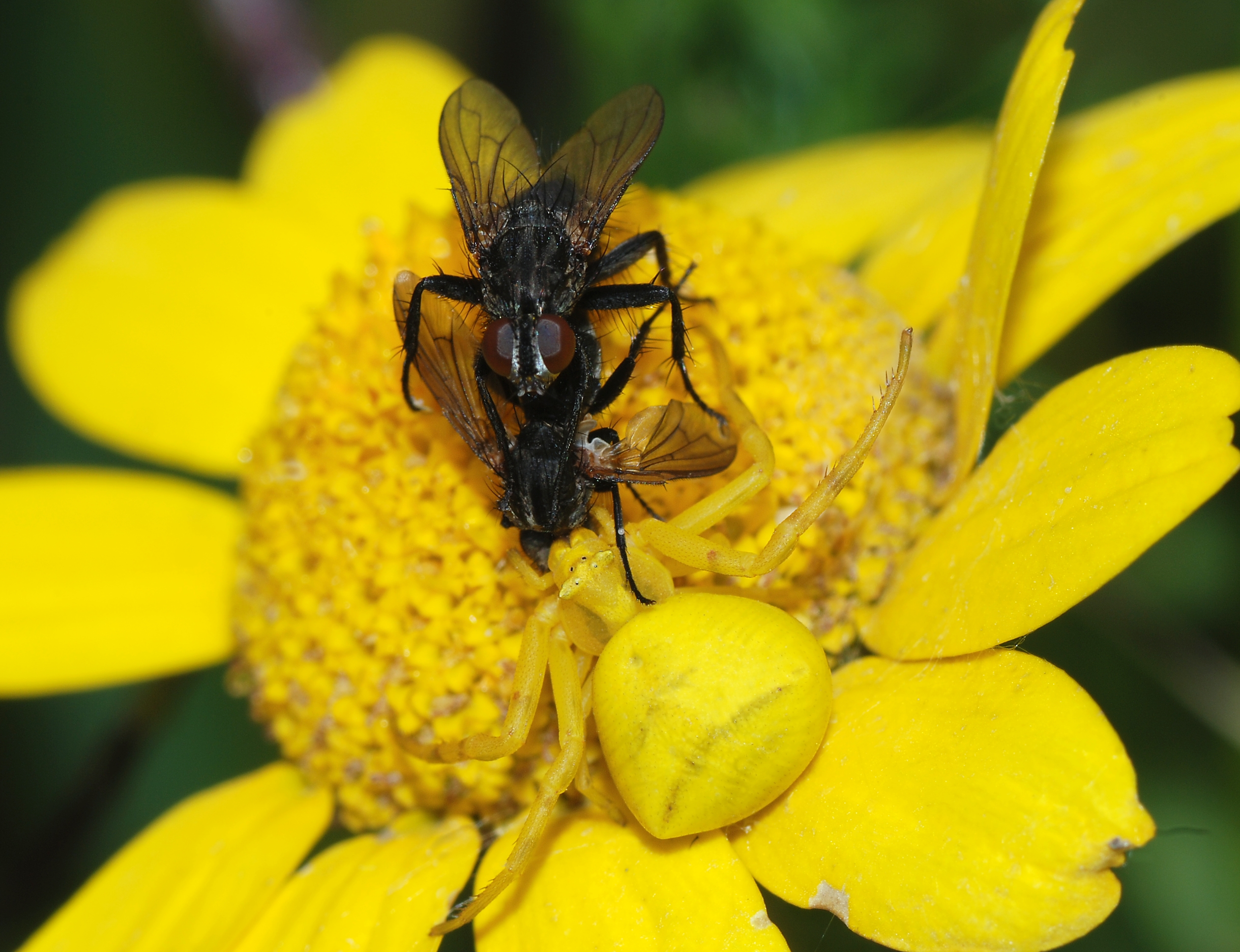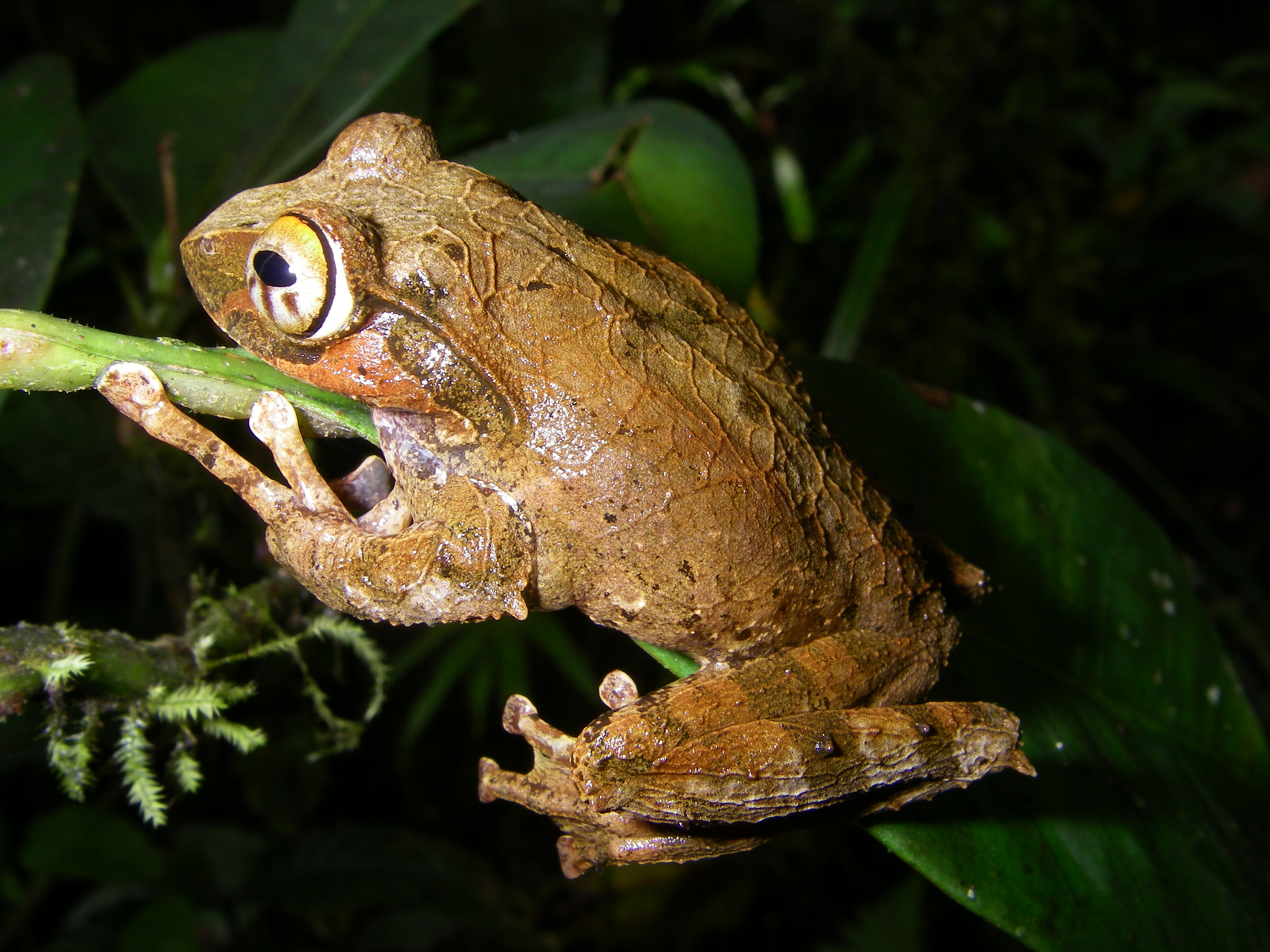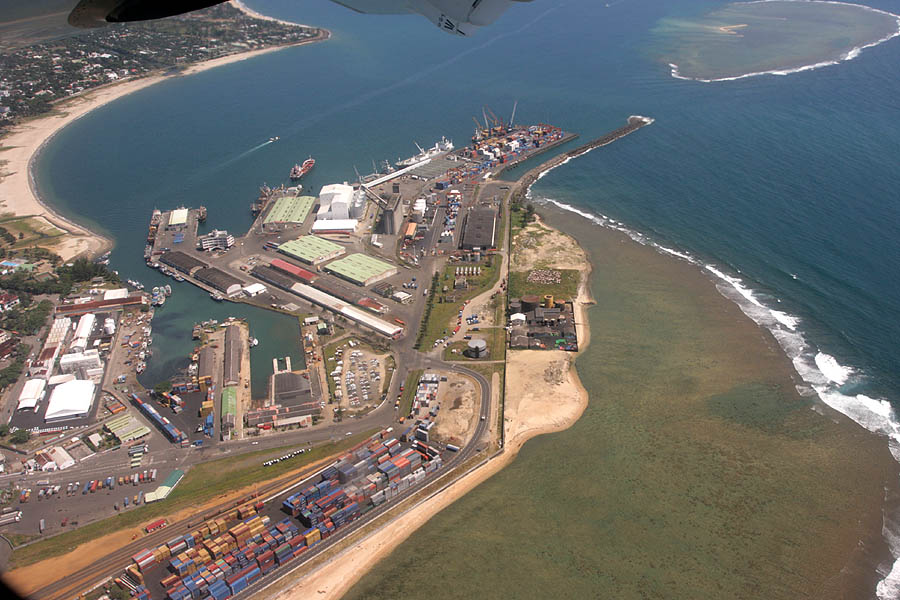|
Calumma Parsonii
Parson's chameleon (''Calumma parsonii'') is a species of chameleon in the Family (biology), family Chamaeleonidae that is Endemism, endemic to eastern and northern Madagascar. It is found from lowlands to an altitude of above sea level and mainly inhabits humid primary forest, but can also occur in disturbed habitats with trees. For a chameleon, it is very large, long-lived and slow-reproducing. Etymology The Specific name (zoology), specific name, ''parsonii'', was coined in 1824 by Georges Cuvier in honor of British physician James Parsons (physician), James Parsons. Description The Parson's chameleon is usually considered the world's largest chameleon by weight and one of the largest by length (where it is surpassed by the Malagasy giant chameleon). Adult males typically weigh , have a casque on the top of their head and ridges running from above the eyes to the nose, forming two warty "horns". There are two recognized subspecies: The widespread nominate subspecies, ''Calu ... [...More Info...] [...Related Items...] OR: [Wikipedia] [Google] [Baidu] |
Frank Glaw
Frank Rainer Glaw (born 22 March 1966 in Düsseldorf) is a German Herpetology, herpetologist working at the Zoologische Staatssammlung München. Glaw studied biology in Cologne from 1987, where he completed his diploma. Thereafter, he attended the University of Bonn, from which he graduated in 1999, after completing his Ph.D. thesis titled ''Untersuchungen zur Bioakustik, Systematik, Artenvielfalt und Biogeographie madagassischer Anuren'' about the frogs of Madagascar, supervised by Professor Wolfgang Böhme. Since 1997, he has been the curator of herpetology at the Zoologische Staatssammlung München. Glaw's focus during and after his thesis work was the herpetofauna of Madagascar. Since the end of the 1980s, he has been working closely with Miguel Vences, currently professor for evolutionary biology and zoology at the Technische Universität Braunschweig. Together, they published ''A Field Guide to the Amphibians and Reptiles of Madagascar'' in 1992, a benchmark work on the am ... [...More Info...] [...Related Items...] OR: [Wikipedia] [Google] [Baidu] |
Subspecies
In Taxonomy (biology), biological classification, subspecies (: subspecies) is a rank below species, used for populations that live in different areas and vary in size, shape, or other physical characteristics (Morphology (biology), morphology), but that can successfully interbreed. Not all species have subspecies, but for those that do there must be at least two. Subspecies is abbreviated as subsp. or ssp. and the singular and plural forms are the same ("the subspecies is" or "the subspecies are"). In zoology, under the International Code of Zoological Nomenclature, the subspecies is the only taxonomic rank below that of species that can receive a name. In botany and mycology, under the International Code of Nomenclature for algae, fungi, and plants, other infraspecific name, infraspecific ranks, such as variety (botany), variety, may be named. In bacteriology and virology, under standard International Code of Nomenclature of Prokaryotes, bacterial nomenclature and virus clas ... [...More Info...] [...Related Items...] OR: [Wikipedia] [Google] [Baidu] |
Pollen
Pollen is a powdery substance produced by most types of flowers of seed plants for the purpose of sexual reproduction. It consists of pollen grains (highly reduced Gametophyte#Heterospory, microgametophytes), which produce male gametes (sperm cells). Pollen grains have a hard coat made of sporopollenin that protects the gametophytes during the process of their movement from the stamens to the pistil of flowering plants, or from the male Conifer cone, cone to the female cone of gymnosperms. If pollen lands on a compatible pistil or female cone, it Germination, germinates, producing a pollen tube that transfers the sperm to the ovule containing the female gametophyte. Individual pollen grains are small enough to require magnification to see detail. The study of pollen is called palynology and is highly useful in paleoecology, paleontology, archaeology, and Forensic science, forensics. Pollen in plants is used for transferring Ploidy#Haploid and monoploid, haploid male genetic ma ... [...More Info...] [...Related Items...] OR: [Wikipedia] [Google] [Baidu] |
Sit-and-wait Predator
Ambush predators or sit-and-wait predators are carnivorous animals that capture their prey via stealth, luring or by (typically instinctive) strategies utilizing an element of surprise. Unlike pursuit predators, who chase to capture prey using sheer speed or endurance, ambush predators avoid fatigue by staying in concealment, waiting patiently for the prey to get near, before launching a sudden overwhelming attack that quickly incapacitates and captures the prey. The ambush is often opportunistic, and may be set by hiding in a burrow, by camouflage, by aggressive mimicry, or by the use of a trap (e.g. a web). The predator then uses a combination of senses to detect and assess the prey, and to time the strike. Nocturnal ambush predators such as cats and snakes have vertical slit pupils helping them to judge the distance to prey in dim light. Different ambush predators use a variety of means to capture their prey, from the long sticky tongues of chameleons to the expanding mou ... [...More Info...] [...Related Items...] OR: [Wikipedia] [Google] [Baidu] |
Masoala National Park
Masoala National Park, in northeast Madagascar, is the largest of the island's protected areas. Most of the park is situated in Sava Region and a part in Analanjirofo. Created in 1997, the park protects 2,300 square kilometres of rainforest and 100 square kilometres of marine parks. The Masoala Peninsula is exceptionally diverse due to its large size, and variety of habitats. Altogether, the park protects tropical rainforest, coastal forest, flooded forest, marsh, and mangrove. Three marine parks protect coral reefs and a dazzling array of marine life. Climate This is an exceptionally wet area of Madagascar. The driest part of the year is from September to December. As the park is accessible only by a three-hour boat journey, the cyclone season (January to March) is best avoided. Flora and fauna There are ten lemur species, including the red ruffed lemur, which is native to the peninsula. The island reserve of Nosy Mangabe is one of the best sites in Madagascar to try to g ... [...More Info...] [...Related Items...] OR: [Wikipedia] [Google] [Baidu] |
Alaotra-Mangoro
Alaotra-Mangoro is a region in eastern Madagascar. It borders Sofia Region in north, Analanjirofo in northeast, Atsinanana in east, Vakinankaratra in southwest, Analamanga in west and Betsiboka in northwest. The capital of the region is Ambatondrazaka, and the population was 1,255,514 in 2018. The area of the region is . Administrative divisions Alaotra-Mangoro Region is divided into five districts, which are sub-divided into 82 communes. * Ambatondrazaka District - 20 communes * Amparafaravola District - 21 communes * Andilamena District - 8 communes * Anosibe An'ala District - 11 communes * Moramanga District - 22 communes Population The region is mainly populated by the Sihanaka in the north, and the Bezanozano in the south. Other minorities are present, notably the Merina. Economy Agriculture With 120.000 ha of planted surface, the region constitutes the main rice basin of Madagascar. Other crops cover manioc (175.000 tonnes), potatoes (49.000 tonnes), corn (50 ... [...More Info...] [...Related Items...] OR: [Wikipedia] [Google] [Baidu] |
Ranomafana National Park
Ranomafana National Park is a national park in southeastern Madagascar, in the Haute Matsiatra and Vatovavy regions. It was established as Madagascar's fourth national park in 1991 following the rediscovery of the greater bamboo lemur (''Hapalemur simus'') and the discovery of the golden bamboo lemur (''Hapalemur aureus'') by the primatologist Dr. Patricia Wright. The park protects more than 41,600 hectares (161 square miles) of tropical rainforest at elevations ranging from 800 to 1,200 m (2,645 to 3,937 ft) and is home to several rare species of plants and animals. It was later integrated into the UNESCO World Heritage Site Rainforests of the Atsinanana. The Centre ValBio research station is adjacent to the park and was created in 2003 by Stony Brook University for biodiversity research, community health and education, environmental arts, and reforestation. The park's name is derived from the Malagasy words ("hot water") due to the hot springs in the nearby town ... [...More Info...] [...Related Items...] OR: [Wikipedia] [Google] [Baidu] |
Turquoise (color)
Turquoise ( ) is a cyan color, based on the turquoise, mineral of the same name. The word ''turquoise'' dates to the 17th century and is derived from the French language, French , meaning 'Turkish', because the mineral was first brought to Europe through Turkey from mines in the historical Greater Khorasan, Khorasan province of Iran (Persia) and Afghanistan today. The first recorded use of ''turquoise'' as a color name in English language, English was in 1573. The Web colors#X11 color names, X11 color named turquoise is displayed on the right. Turquoise gemstones Turquoise is an opaque, blue-to-green mineral that is a hydrate, hydrous phosphate of copper and aluminium, with the chemical formula copper, Cualuminium, Al6(phosphorus, Poxygen, O4)4(Ohydrogen, H)8·4water, H2O. It is rare and valuable in finer grades and has been prized as a gemstone, gem and ornamental stone for thousands of years owing to its unique hue. In many cultures of the Old world, Old and New Worlds, t ... [...More Info...] [...Related Items...] OR: [Wikipedia] [Google] [Baidu] |
Nosy Boraha
Nosy Boraha , also known as Sainte-Marie, main town Ambodifotatra, is an island off the east coast of Madagascar. The island forms an administrative district within Analanjirofo Region, and covers an area of 222 km2. It has a population estimated at 30,000. Sainte-Marie Island is known for its authentic and preserved character, whale watching, beautiful beaches, and history. It is known for its history as a pirate haven. Administration The island is organized as the city (''commune urbaine'') and district of Nosy Boraha in Analanjirofo Region. *1 town hall *17 fokontany (villages) *1 deputy Population The Betsimisaraka are the largest ethnic group on the island, though there had been a long history of mixed marriages, including with pirates in the 17th century. Transport infrastructure *1 international airport in the South (inaugurated 2015) *1 commercial port (Ilot Madame) *1 passenger port (Ambodifotatra) Ferries leave from Soanierana Ivongo and Mahambo. There are ... [...More Info...] [...Related Items...] OR: [Wikipedia] [Google] [Baidu] |
Mananara Nord
Mananara Nord or Mananara Avaratra is a municipality in Madagascar. It belongs to the district of Mananara Nord, which is a part of Analanjirofo Region. The population of the commune was 35,148 in 2018. It is situated at the Route Nationale No.5 between Maroantsetra and Toamasina. Mananara Nord is served by a local airport An airport is an aerodrome with extended facilities, mostly for commercial Aviation, air transport. They usually consist of a landing area, which comprises an aerially accessible open space including at least one operationally active surf ... and maritime harbour. It also has riverine harbour at the Mananara River (Analanjirofo) that is located in the East of the town center. In addition to primary schooling the town offers secondary education at both junior and senior levels. The town provides access to hospital services to its citizens. The majority 50% of the population of the commune are farmers. The most important crop is cloves, whil ... [...More Info...] [...Related Items...] OR: [Wikipedia] [Google] [Baidu] |
Toamasina
Toamasina (), meaning "like salt" or "salty", unofficially and in French language, French Tamatave or in the past as Port aux prunes, is the capital of the Atsinanana region on the east coast of Madagascar on the Indian Ocean. The city is the chief seaport of the country, situated northeast of its capital and largest city Antananarivo. In 2018 Toamasina had a population of 325,857. History Under French rule, Toamasina was the seat of several foreign consuls, as well as of numerous French officials, and was the chief port for the capital and the interior. Imports consisted principally of piece-goods, farinaceous foods, and iron and steel goods; main exports were gold dust, raffia, hides, caoutchouc (natural rubber) and live animals. Communication with Europe was maintained by steamers of the Messageries Maritimes and the Havraise companies, and also with Mauritius, and thence to Sri Lanka, by the British Union-Castle Line. During the colonial period, owing to the character of th ... [...More Info...] [...Related Items...] OR: [Wikipedia] [Google] [Baidu] |






